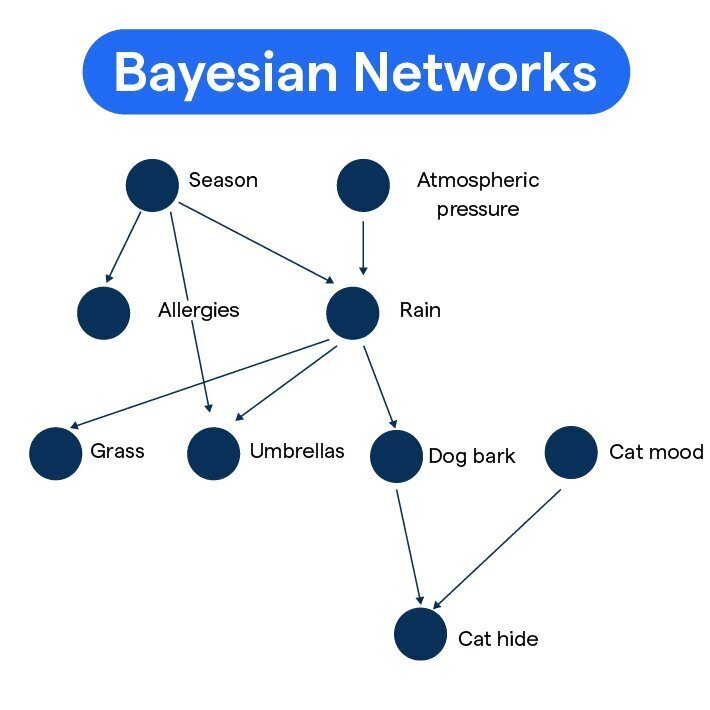Bayesian networks are a powerful type of probabilistic graphical model that represent a set of variables and their conditional dependencies using directed acyclic graphs (DAGs). Each node in the graph corresponds to a variable, while the directed edges denote the relationships and dependencies between these variables. This structure allows for the modeling of complex systems where uncertainty and probabilistic reasoning are essential.
Key Features of Bayesian Networks
Probabilistic Nature
Bayesian networks operate on the principles of probability, allowing them to incorporate both data-driven insights and expert knowledge. They can be used for various applications, including diagnostics, decision-making under uncertainty, anomaly detection, and causal modeling. The probabilistic framework enables the networks to update beliefs about the state of the system as new evidence becomes available[1][2].
Graphical Representation
The graphical representation of Bayesian networks aids in visualizing the relationships between variables. Each node represents a variable, which can be discrete or continuous, while the edges indicate direct dependencies. This visualization helps in understanding the causal structure of the model and facilitates reasoning about the system[1][3].
Inference and Learning
Bayesian networks support inference, which involves updating the probability estimates for certain variables based on observed evidence. This is achieved through various algorithms that compute the posterior distribution of the variables given the evidence. Common inference methods include variable elimination and belief propagation[2][4].
Learning in Bayesian networks can be performed through two main approaches: parameter learning, where the conditional probability distributions are estimated from data, and structure learning, where the network’s topology is inferred from the data. This flexibility allows Bayesian networks to be tailored to specific domains and applications[3][4].
Applications
Bayesian networks are widely used in fields such as medicine, finance, and artificial intelligence. For instance, they can model the probabilistic relationships between diseases and symptoms, allowing for better diagnostic tools. In finance, they can be employed to assess risks and make informed investment decisions[2][3].
In summary, Bayesian networks provide a robust framework for modeling uncertainty and reasoning about complex systems. Their combination of graphical representation, probabilistic reasoning, and flexible learning capabilities makes them an invaluable tool in various domains.
Further Reading
1. Introduction to Bayesian networks | Bayes Server
2. Bayesian network – Wikipedia
3. A Gentle Introduction to Bayesian Belief Networks – MachineLearningMastery.com
4. https://bayesian-intelligence.com/publications/bai/book/BAI_Chapter2.pdf
5. https://web.stanford.edu/class/archive/cs/cs221/cs221.1196/lectures/bayes1.pdf
Description:
Probabilistic graphical models representing variables and their conditional dependencies.
IoT Scenes:
Predictive analytics, decision support systems, and risk assessment.
Risk Assessment: Evaluating risks and uncertainties in IoT systems.
Decision Support: Providing probabilistic reasoning and decision support based on sensor data.
Predictive Modeling: Making predictions based on probabilistic relationships between variables.
Fault Diagnosis: Diagnosing faults and issues using probabilistic models.


